2017 consultation on amendments to permitted devlopment rights for fin fish and shellfish: response
Scottish Government analysis and response to the consultation on amendments to permitted development rights for fin fish and shellfish.
Consultation Analysis: Amendments to Permitted Development Rights (PDRs) for Fin Fish and Shellfish Developments 2017
Respondent profile
1. 29 responses were received; 72% from organisations and 28% from individuals:
2. Respondents were divided into one of four categories based on information provided on their Respondent Information Form.
| Respondent | Number | % |
|---|---|---|
| Local Authority | 5 | 17 |
| Industry | 7 | 24 |
| Public body | 4 | 14 |
| Others | 13 | 45 |
| Total | 29 | 100 |
3. Of the 29 responses received, all gave permission for their response to be published by the Scottish Government. Three individuals requested their names be withheld. A full list of respondents is at Annex 1, and the full responses can be viewed at: https://consult.scotland.gov.uk/marine-scotland/rights-for-finfish-and-shellfish-developments/consultation/published_select_respondent
4. For the purposes of this analysis, the responses "not answered" and "don't know" are not included in the graphs. These answers were largely registered as the respondent felt that they could not comment on fish farming as a shellfish grower, and vice versa, or the respondent had no locus in relation to the question.
Response analysis
5. The consultation sought comments on eighteen questions concerning amendments to PDRs for fin fish and shellfish developments in Scotland.
Modifications to Existing Class of PDR
Class 21A - placement, relocation or installation of a cage
6. Question 1 - Do you agree that the fin fish cage size and area restrictions which prevent PDR use for replacement or relocation of an existing cage should be removed?
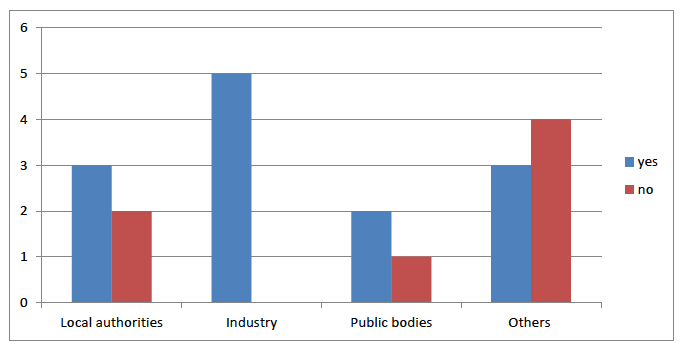
7. The majority of respondents (45%), predominantly from the industry , favour removal of cage size and area restrictions, with only 24%, mostly individuals, against. 31% of respondents chose not to answer or answered "don't know".
8. Those favouring this proposal felt that it was logical and reasonable, allowing flexibility and promoting efficiency, enabling developers to undertake routine operations more easily.
9. Those not in favour think that no biomass control, would allow uncontrolled expansion of the industry. They are also concerned that the cumulative landscape, visual and biodiversity impacts of re-siting large cages, is not being properly considered, with disease and sea lice transfer impacts from the salmon farming industry on wild fish also being raised. It was also suggested that planning applications should cover faecal build up below cages affecting water quality, and that aquaculture companies discuss implications for safe navigation with the Royal Yachting Association of Scotland.
Conclusion
10. We propose that this amendment to PDR is introduced. Removal of the limits will benefit fish farms with pen circumferences of greater than 100m (or greater than 796 square metres where pens are not circular) which are currently not permitted to replace or relocate pens under PDR. The amendment will give these sites the same provision as sites with smaller equipment. We do not consider that the removal of cage size and area restrictions infer any environmental impacts. Removal of these limits will allow operational flexibility with regards to pen replacement at larger sites.
11. Question 2 - Do you agree that prior notification should not be required for fin fish pens replaced, in the same location, with a fin fish cage of the same size, colour and design?
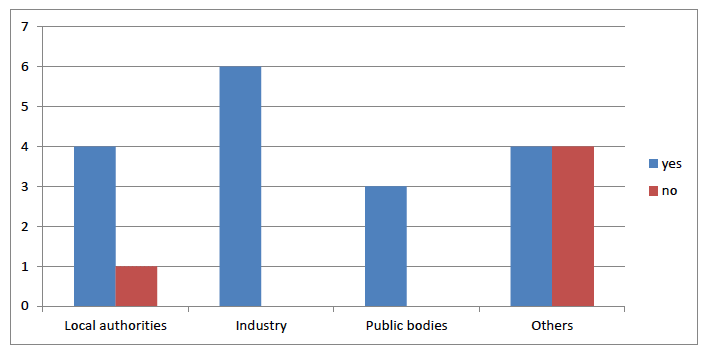
12. The majority of respondents (58%), predominantly from the industry, agree that prior notification should not be required, with only 17%, mostly individuals, against. 24% of respondents chose not to answer or answered "don't know".
13. Supporters welcomed this logical, reasonable, and efficient approach, again, enabling developers to undertake routine operations easily. Respondents suggested it would be better to have one class covering replacement of cages irrespective of cage size or farm surface area, with another class covering adding additional equipment. It was also suggested that as technology develops, there should be scope to replace cages with newer and different design types without prior notification.
14. Those not favouring this proposal do not want a change of fin fish species to be automatically permitted, and raised concerns about smolt rearing in migratory systems, genetic interactions with wild salmon, eutrophication of water bodies used for rearing cages and their outflow streams, and the environmental impacts of fish farm chemicals. Use of acoustic deterrent devices ( ADDs) on fish farms, and whether these proposed changes will be appropriately managed to mitigate impacts on marine mammals, was also raised.
Conclusion
15. We recommend that the requirement for prior approval for 'like for like' replacements is removed. Replacement of certain equipment, including pens, is a routine operational requirement on fish farms. Removal of prior notification removes an administrative burden for routine replacement of equipment.
Class 21 C - Replacement of top net or support
16. Question 3 - Do you agree that prior notification should not be required for the purpose of replacing an existing fin fish cage top net or support with a top net or support of the same size, colour and design?
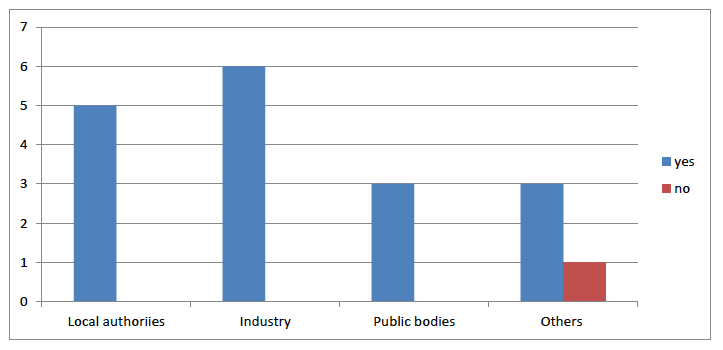
17. The majority of respondents (58%), across all categories agreed with this proposal, with only one individual against. 38% of respondents chose not to answer or answered "don't know".
18. Those in agreement with this proposal consider that it enables routine operations to be undertaken in a logical, reasonable and efficient way. However, the type, design, etc. of equipment needs to be clearly identified and independently checked (although it was not specified who should do the checking). Grouping all replacements of equipment of the same size, colour and design which do not require prior notification into one class was suggested. Thickness of top nets is an important aspect of the net's visual presence and this should be able to be replaced "like for like" under PDR without prior notification. With advances in cage equipment technology and improvements in knowledge around predator exclusion, there is a current need for this operational flexibility.
Conclusion
19. We recommend that the requirement for prior approval for 'like for like' replacements is removed. Replacement of certain equipment on fish and shellfish farms is a routine operational requirement. Removal of prior notification removes an administrative burden for replacement of equipment.
20. Question 4 - Do you agree that the limit for use of PDR of 2.5 metres for equipment to support the fin fish cage top net should be removed from this class of PDR?
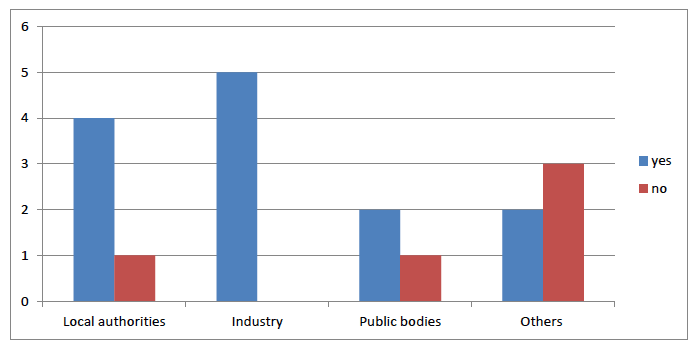
21. The majority of respondents (45%), predominantly from the industry agreed with this proposal, with 17% against. 38 % of respondents chose not to answer or answered "don't know".
22. Those favouring this change think it will remove unnecessary burdens on developers, enabling rapid introduction of innovative technology. The industry in particular appreciate that overall considerations will be dealt with at the planning consent stage, and the limit removal will allow future flexibility in accommodating innovation of cage equipment and supports. Respondents also supported the prior notification requirement for any replacement top net not of the same size, colour and design.
23. Those opposing this proposal are concerned that higher nets increase total net area, and this, and any change to finer nets could increase environmental impacts, particularly the risk of nocturnal bird collision and entanglement. There is also concern about changes to visual impacts in designated landscapes.
Conclusion
24. We recommend that this amendment is introduced. The impacts of the top net and top net support, including height, will be evaluated during the planning process. The safeguard of prior notification will remain for changes which are not 'like for like'.
Class 21E - placing a long line
25. Question 5 - Do you agree that shellfish farms should be able to replace existing long lines, in the same or a different location, with a long line of the same size, colour and design as those already on site?
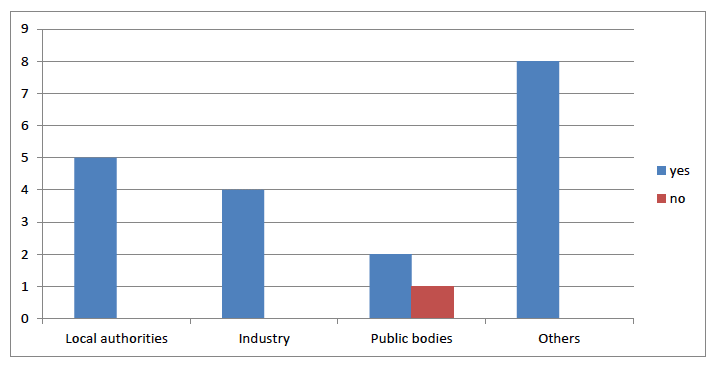
26. The majority of respondents (66%) agree with this proposal, with only one public body against. 31% of respondents chose not to answer or answered "don't know".
27. Those in agreement with this proposal state that it is unreasonable and not a planning function to consult each time a relatively minor replacement operation is carried out, as line replacement is a vital part of shellfish farm maintenance, enabling routine operations to be undertaken during production cycles. Respondents agree that placing long lines of the same size, colour and design but in a different location should require prior notification as planning areas for shellfish farms can be large. However, there is concern about existing farm boundaries as Crown Estate leases can cover extensive areas - using different locations may raise site boundary questions.
28. If the development is in, or near to, a designated site, there may also be environmental, visual, and navigation issues to consider, so those in favour also think that prior notification should be required where the change is not like for like, and where the proposed amendment allow lines to be placed closer to the edge of a designated site. These issues should be highlighted in guidance, prompting local authorities to seek advice from SNH.
29. Those opposing are also concerned that cetaceans can be damaged by entanglement with fixed ropes in the sea, including fish farm moorings.
Conclusion
30. Long lines are required to be replaced on a shellfish farm on a cyclical basis. We therefore recommend that this amendment is introduced. The change will give shellfish long line operators the same right to replace and maintain equipment as is permitted for fin fish pen sites under PDR.
31. Question 6 - Do you agree that replacement of shellfish farm long lines which are 'like for like' and placed in the same location should be permitted without prior notification?
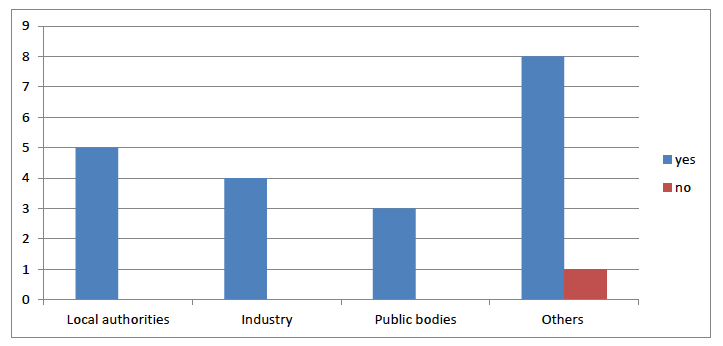
32. The majority of respondents (69%), agreed with this proposal, be required, with only one individual, against. 28% of respondents chose not to answer or answered "don't know".
33. Those in agreement state that it is not a planning function, and unreasonable to consult on each minor replacement carried out, but that oversight should be exercised in every case. This proposed change is also particularly welcome at a time when public resources and local authorities are stretched. While it was agreed that placing a line in a different location requires prior notification as there may be environmental, visual, or navigation issues to consider, the majority agreed that prior notification should not be required for long lines replaced in the same location, of the same size, colour and design. Respondents consider that permission has already been granted so there is no need for further planning input, and this will enable routine operations to be undertaken during production cycles.
Conclusion
34. We recommend that this amendment is introduced. This will remove an administrative burden and allow routine operational long line replacements to take place unhindered.
Additional Lines
35. Class 21E allows the placing or assembly of a long line for use in shellfish farming within the area of an existing fish farm. Development is not currently permitted under this class where the surface areas of the waters covered by the long line together with the original equipment be either - (a) more than 500 square metres greater; or (b) more than 10% greater, than the surface area of the waters covered by the original equipment.
36. Question 7 - Do you agree with the change from the shell fish farm current area limits described above to a scaled line approach which uses lines of equal length to those currently on site?
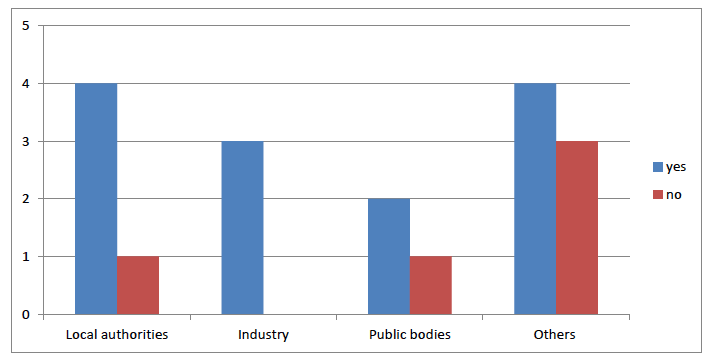
37. The majority of respondents (45%), agreed with this change, with only 17% against. 38% of respondents chose not to answer or answered "don't know".
38. Those agreeing with this proposal think this a welcome improvement to the current limiting position. This will also give scope for greater efficiencies in a defined area, with scope to permit the addition of long lines more than once, if not within a defined period of 5 years, and within the original farm boundary. There is concern about possible increased environmental carrying capacity following an increased concentration of lines, but respondents agree that this proposal is acceptable if the lines are of the same colour, design, and length.
39. Respondents also state that developers should be allowed to fully utilise the area of the lease, depending on requirements, as these vary depending on species or purpose to ensure the future success of this 'fledgling industry'. As the industry has developed, recognition has been given to some sites for spat production and others as good growth areas.
40. Respondents think the scaled line approach, and lines of equal length were more practical than current area limits, with the potential to allow uptake of PDR. Again, it was noted that this proposal would enable routine operations to be undertaken during production cycles, but that placing lines in different locations may require prior notification due to environmental, visual, or navigational issues, particularly in conservation areas.
41. Those opposing are also concerned that cetaceans can be damaged by entanglement with fixed ropes in the sea, including fish farm moorings.
Conclusion
42. We recommend that this amendment is introduced. The current area restriction often results in permission for a line which is less than equal in length to those currently on site and has led to limited uptake of this class of PDR. Farms which utilise long lines usually gain permission for lines of equal length. Removal of the current requirements and introduction of a scaled approach will ensure an even footprint is maintained.
43. Question 8 - Do you agree with the chosen scaled approach to addition of shellfish farm long lines [less than or equal to 6 lines = 1 additional long line, 7 or more = up to 2 additional long lines]?
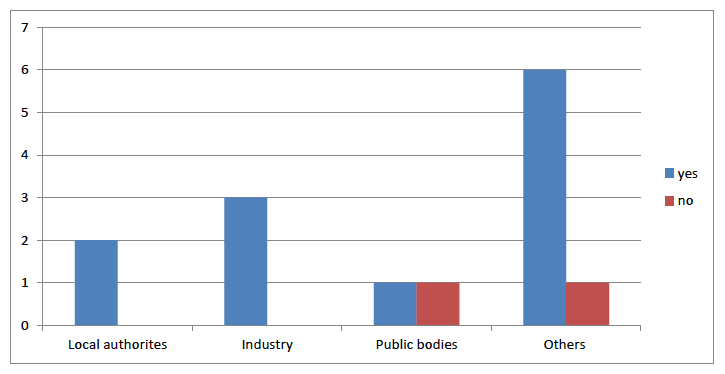
44. The majority of respondents (41%), agreed with this proposal, with only 7%, against. Over half (52%) chose not to answer or answered "don't know".
45. This scaled approach to adding long lines is well supported, with the majority agreeing this proposal reasonable and sensible, a logical basis for expansion, and that it is aesthetically pleasing for complete lines to be permitted rather than an artificially constrained limit.
46. Respondents stated that the current appliance of the Town and Country Planning Act is detrimental to shellfish farming, particularly in the West Highlands. Respondents also felt that prior notification for additional lines should remain as this will permit local authorities to consider visual impacts, the carrying capacity of the water body, and potential environmental impacts. Again, there is concern about increased environmental carrying capacity following increased line concentration.
47. Respondents welcomed that as prior notification will be required in all cases, this will allow biological carrying capacity, visual impacts etc. to be assessed, and agreed that this PDR should only be available for single use if for exactly the same reasons. It was also noted that the new criteria would take any increase in equipment area under PDR above 10% (minimum 16.6% for 6 lines or less). One individual suggested extending the proposed scale to consider larger farms.
48. Those opposing are concerned that cetaceans can be damaged by entanglement with fixed ropes in the sea, including fish farm moorings.
Conclusion
49. We recommend that a scaled approach is introduced. However the comments made with regards to the increase in equipment area for small sites are noted. Consideration will be given to the appropriate scale increase and ensuring legislation is future proofed with regards to larger sites.
Class 21F - Change of Use (Species)
50. Question 9 - Do you agree that shellfish farms should be able to change the species farmed under PDR as described above, with the caveat that no change in equipment is permitted under this class?
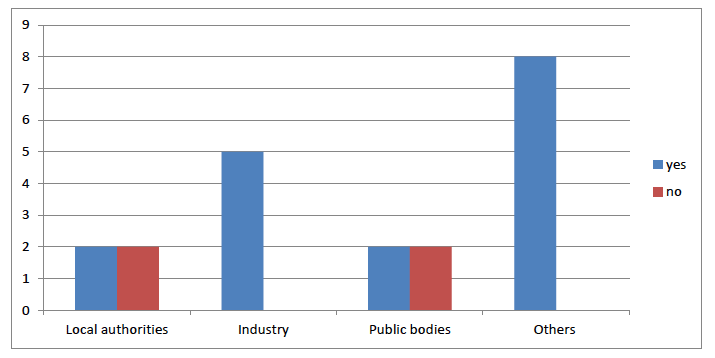
51. The majority of respondents (59%), agreed with this proposal, be required, with only 17% against. 24% of respondents chose not to answer or answered "don't know".
52. Respondents agreed that this proposal increases flexibility, and promotes expansion, diversity and innovation, allowing the use of newer systems (i.e. Ortac). Shellfish farms should be able to change species farmed under PDR (with prior notification) but as a change of shellfish species requires changing equipment, this PDR class will be utilised, along with a full planning application. When changing from scallops to mussels there can be significant changes to visual impacts, as the number and size of surface floats is greater on mussel lines. One respondent asked that the current PDRs under Class 21F (1)(b) and (1)(c) be reconsidered: http://www.gov.scot/Topics/marine/Fish-Shellfish/18716/fish-farm/PDRGuidance
53. Those opposing this proposal had concerns about allowing the introduction non-native species into the wild (an offence under the Wildlife Scotland Act 2011), and that biosecurity implications for containment need to be considered and monitored. Another respondent thinks the caveat that no change in equipment is permitted is too prescriptive. Some felt that the wild fish interests should have been consulted much earlier in this process, and that farming Atlantic salmon requires full planning consent, and should not be considered under PDRs.
54. Some were concerned that both shellfish and fin fish farming have potentially severe impacts on the natural environment through the release of non- native species or non-local strains and the transfer of disease from farmed to wild stock.
Conclusion
55. We recommend that the additional shellfish options for change of use (species) options are introduced. The ability to utilise this PDR was questioned if there is no permissible change in subsurface in equipment. We will consider this further in finalising the amending Order and in any associated guidance.
Proposed New Class of PDR
56. Question 10 - Do you agree that fish farms should be able to replace a mooring or anchor with a mooring or anchor of the same size and design, in the same location, without prior notification (European sites and MPA will require prior notification)?
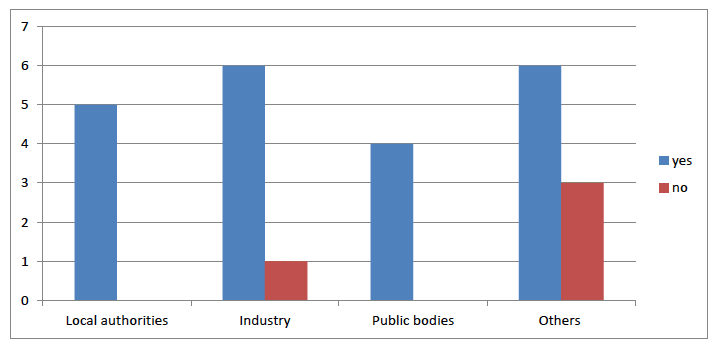
57. The majority of respondents (72%), agreed with this proposal, with only 13% against. 13% of respondents chose not to answer or answered "don't know".
58. Those agreeing to the proposal agreed with this proposal unless the farm was sited within a marine designated site, with prior notification required, and wanted anchors and moorings to be checked and replaced to ensure continued function as part of normal routine operations.
59. Some respondents think the approval of an overall planning consent and the creation of a planning boundary should cover the subsequent placing of the necessary mooring and anchoring systems needed, depending on the scale and nature of the development. They agree that required equipment changes, and "like for like" equipment replacement within the site boundary shouldn't require prior notification. The granting of a planning consent and the creation of a planning boundary should cover the subsequent placing of the necessary mooring and anchoring systems necessary for the development, as permitted.
60. This proposal was received as a logical reflection of operational requirements, but some respondents think it should cover both shellfish and "sea vegetable" farms. Mooring/anchoring emergencies occur and operators must be prepared for such eventualities, and it is vital for the safe and efficient operation of any marine installation, regardless of its location, that the operators be permitted to change or enhance anchor systems as required and without delay in a dynamic and highly volatile environment. An operator should not have to apply for permission to lay anchors, and there is no reason that protected sites should require such notification.
Conclusion
61. We recommend that this amendment is introduced to allow greater operational flexibility.
62. Question 11 - Do you agree that fin fish farms should be able to replace a mooring or anchor with a mooring or anchor of a different design in the same location, and that farms should be permitted to relocate a mooring or anchor within its boundary, with the condition of prior notification?
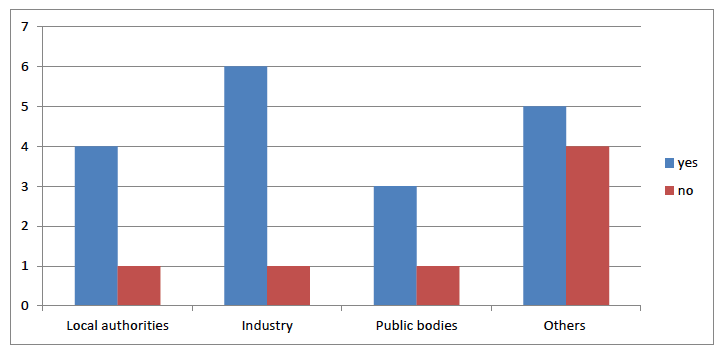
63. The majority of respondents (62%), agreed with this proposal, be required, with 24%, against. 14% of respondents chose not to answer or answered "don't know".
64. Those agreeing with this proposal think prior notification only necessary within a conservation area, as there is no added value giving prior notification to the planning authority for anchor placement unless there is a designation. Changes to the mooring and anchoring system are operational necessities, and if these are within the planning boundary, prior notification is unnecessary. Such changes may also be needed to ensure site security or to enable technical standards compliance. Some respondents asked that prior notification be given for replacement of anchors or equipment within site boundaries.
65. One respondent wanted prior notification for all, as there may be issues in determining the mooring area unless the site has had planning permission. There was also concern that cetaceans can be damaged by entanglement with fixed ropes in the sea, including fish farm moorings, and
67. Some respondents think prior notification is pointless, as this action reflects operational norms, enabling updating with modern, efficient designs. Farmers can't wait for notification to replace anchors, when having to react quickly in extreme weather to avoid loss of equipment and livestock, and ensure safe operation of marine installations.
68. It was noted that that this proposal will allow replacement of anchors and mooring within a mooring area, but not necessarily in the same location. The new anchors and moorings could be significantly distant from their old positions, resulting in surface equipment being placed some distance from where it was initially granted planning permission. It was also suggested that it is not simply the anchor that causes navigation problems, but the added marker or mooring buoys.
Conclusion
69. It is recommended that this amendment is introduced. It is important that the local authority has an opportunity to assess whether prior approval is required with regards to changed or relocated equipment.
70. Question 12 - Do you agree that replacement of a fin fish cage net with a cage net of the same size, colour and design, should be permitted by PDR without prior notification?
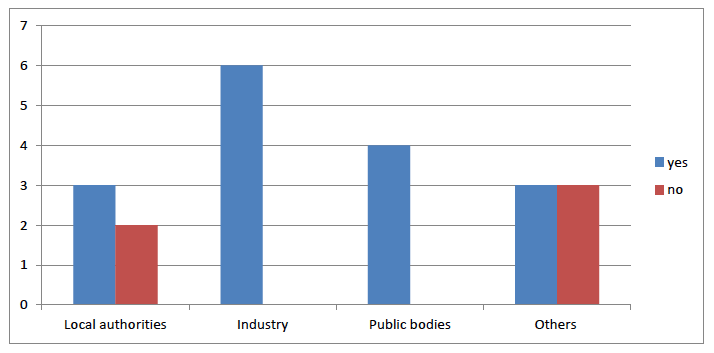
71. The majority of respondents (55%), agreed with this proposal, be required, with only 17% against. 28% of respondents chose not to answer or answered "don't know".
72. Those supporting this proposal stated that operational net changes are routine throughout a production cycle, is not an issue for the planning system. However, if a change in net size and/or depth is needed, this is likely to require notification to other regulatory bodies, particularly SEPA as part of a re-modelling of CAR consent. One respondent asked for the inclusion of changes to net depth not associated with biomass increase (e.g. on welfare grounds).
73. Respondents noted that the consultation document states that changes to net depth/size or volume will not be permitted, but the draft legislation paragraph 1 (b) of Class 21H allows for different net size, with prior notification. Different net shape and colour requires consideration on possible wildlife interactions (entanglement etc.) but changes to overall size/volume shouldn't be permitted under PDR as this has implications for on-site biomass.
74. Some respondents noted that the question does not match the supporting text - the supporting text notes" we consider …of the same or a difference colour and design" whilst the question only asks about "same size, colour and design". PDR for a different colour and design of net as the replacement would not be supported as it might breach a planning condition.
75. There was also concern that changes under this proposal will be appropriately managed to mitigate impacts on marine mammals, particularly concerning the use of acoustic deterrent devices ( ADDs) on fish farms.
Conclusion
76. We agree that net changes are a routine operational requirement for fish farms and should be permitted under PDR. This includes for net cleaning purposes, repairs and general maintenance and to change mesh size during the growth cycle. This will not permit a fish farm to affect its stocking density.
77. Question 13 - Do you agree that secondary fin fish net structures should be permitted by PDR with the requirement of prior notification to the local authority?
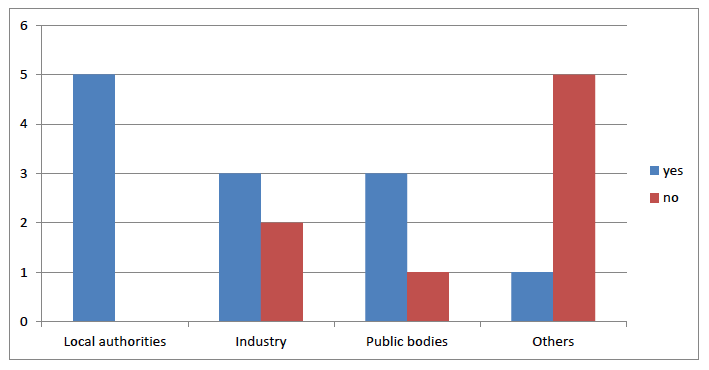
78. The majority of respondents (41%), agreed with this proposal, with 28% against. 31% of respondents chose not to answer or answered "don't know".
79. Those supporting this proposal, noted that prior notification is necessary to assess wildlife and predator interactions (in conjunction with SNH), particularly for farms located close to Natura sites.
80. Industry noted that these are minor additions and variations to site equipment, developed alongside advancing technology and improved containments, and again, not operations for consideration by planning. It raised the issue of the current definition of development as key to the type of equipment changes falling within the planning system, and the need for a review of the definition of "development" for fish farming. It was noted that secondary net structures may not have been considered at the planning stage but may be required for operational purposes, and prior notification shouldn't be required where there are no conceivable impacts in planning terms, e.g. Lice skirts, wrasse hides. Predator nets are different, as there would be potential impacts to consider e.g. entanglement risk). It was requested that this action be undertaken without prior notification, allowing flexibility and innovation of existing and future operational equipment. Another respondent agreed to the proposal, providing the nets did not obstruct navigation lights and marks.
81. Of those not supporting the proposal, some commented that adding additional predator nets and other structures increases entanglement risks to diving birds, particularly in conservation areas. Changes could also affect the visual impact of the site, particularly in conservation areas, and guidance should contain mitigation measures. Others thought that this was a normal operational activity with no requirement for prior notification, and another was concerned with the use of acoustic deterrent devices ( ADDs) on fish farms, and whether these changes will be appropriately managed to mitigate impacts on marine mammals.
Conclusion
82. We recommend that a secondary cage structure class is introduced. We recognise that some secondary cage structure additions, such as wrasse hides, may have less conceivable impacts than the addition of other structures, such as predator nets. We are currently considering whether it is necessary for all secondary net structures to require prior notification or whether secondary net structures can be suitably defined in the legislation. .
83. Question 14 - Do you agree that shellfish farm trestle sites should be permitted to replace trestles with trestles of the same design without prior notification?
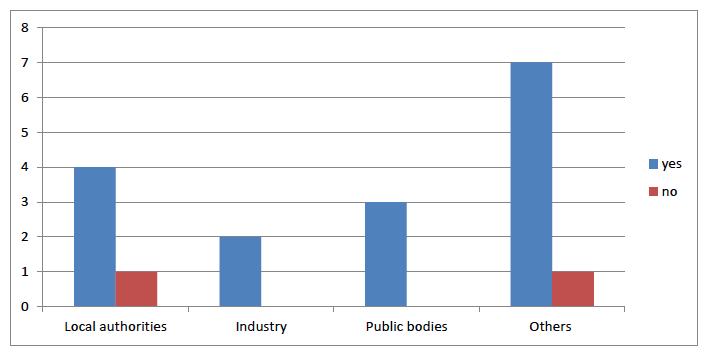
84. The majority of respondents (55%), agreed with this proposal, be required, with 7% against. 38% of respondents chose not to answer or answered "don't know".
85. Supporters of this proposal state that it falls within normal operations, enabling equality with long line production areas, although it was requested that the trestles be of the same size, colour and design. This proposal would also allow utilisation of new systems which have become available (i.e. Ortac). . Respondents thought this proposal necessary for efficient site operation, and to conserve public planning resources.
86. Those against the proposal thought that it demonstrated unnecessary interference, as most sites are submerged from view - a simple maximum unit could be permitted on a designated site footprint. The industry will also suffer if growers are locked into using old technology, and have to complete onerous and expensive planning applications. If a farmer has to apply for planning consent every time a development is trialled, it will discourage innovation. Relocating trestles within the existing farm sites should be permitted, as moving these alters the tidal flow and can benefit the local environment.
Conclusion
87. We recommend that a Trestle class of PDR is introduced and that 'like for like' replacements should be permitted without prior notification. This will allow shellfish farmers to replace aging or damaged equipment without an administrative burden.
88. Question 15 - Do you agree that relocation of a trestle within an existing shellfish farm boundary should be permitted with the condition that the local authority receives prior notification?
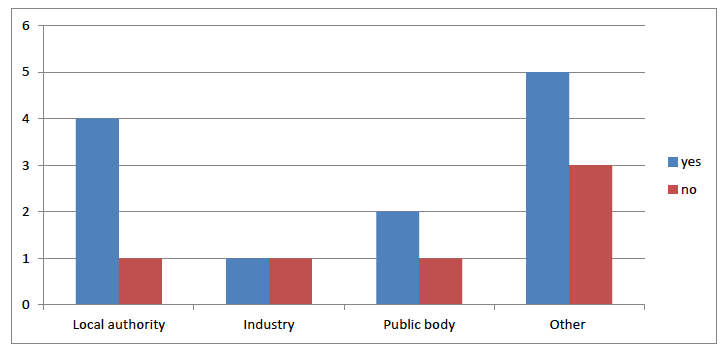
89. The majority of respondents (41%), agreed with this proposal, be required, with 21%, against. 38% of respondents chose not to answer or answered "don't know".
90. Supporters of this proposal think there is a need to assess possible visual impacts with regard to relocation, so prior notification is appropriate. Those with concerns about navigation stated that unmarked trestles can be a hazard for shallow draft vessels operating inshore, and consideration needs to be given on how new positions will be communicated to other water users. Others commented that this would give equality with mussel long lines. One respondent supported the proposal of moving trestles within a site without another stated that prior notice is not required, and there should be freedom to place trestles anywhere in the site boundary - the permit should simply give footprint and maximum density . Prior notification was also considered sufficient, as long as there are no visual impact concerns.
91. Those opposing state that trestles sometimes have to be moved due to shifting sand banks, so it is impractical and unreasonable to notify the local authority every time, if the movements are within the permitted area of the farm. Others think it would limit the ability of the local authority to test public interest on implications of a change, using only the prior notification process. A third individual commented that aquaculture operators should be able to fully utilise existing areas without restriction.
Conclusion
92. We recognise that shellfish trestle farmers may be required to move trestles on occasion due to shifting sands. Furthermore, it is recognised that tidal currents may move trestles over time. We will consider this further in the final wording of the amendment, including whether prior notification is required in all cases, and consider appropriate advice within the guidance.
93. Question 16 - Do you agree with the additional shellfish farm trestle limits set by this class of PDR and the requirement for prior notification?
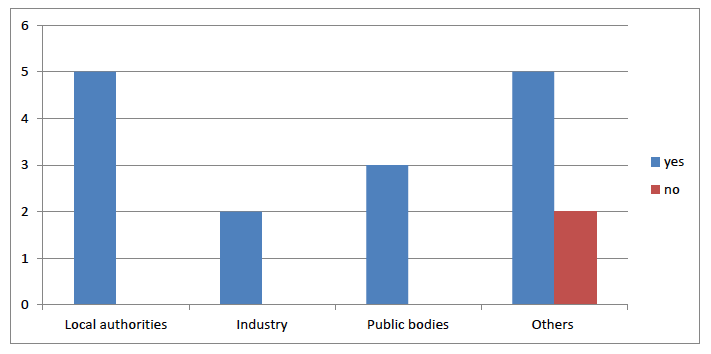
94. The majority of respondents (52%), agreed with this proposal, be required, with 7% against. 42% of respondents chose not to answer or answered "don't know".
95. There was strong support for this proposal, with supporters stating stated that as with long line production, there needs to be a limit to ensure there is no significant burden on carrying capacity - and 10% within the existing planning boundary seems reasonable and sufficient for normal operations. This would also allow for consideration of visual impacts. Other respondents agreed with this proposal providing prior notification is required, particularly in conservation areas, where guidance should prompt local authorities to seek advice from SNH.
96. Other individuals commented that there is a caveat that continued incremental expansion is not permitted - expansion can only occur once, for instance, and there should be no restriction on additional trestles within an existing boundary.
97. Those disagreeing with this proposal stated that if there are issues relating to lines of sight or access, these should be defined on the initial permit, which states a maximum density within the permitted boundary. Some thought the structure of this question conveys a fundamental lack of understanding of this industry and tries to regularise it to fit land based norms familiar to planning officers - under this PDR, oyster farmers could be prosecuted for repositioning trestles without making a planning application.
Conclusion
98. We recommended that this PDR is introduced. Prior notification will allow the Local Authority to determine whether full planning application would be required depending upon original planning permission parameters, including trestle density/ orientation, site location and what has been utilised on site to date. It is the case that farmers do not always lay the maximum allowed number of trestles during initial development and may have permission for more. Currently it is the case that in this situation the addition of trestles previously permitted constitutes new development and would require full planning permission. Introduction of this PDR would assist in this instance.
Boundaries
99. Question 17 - Do you agree with the approach for the interpretation of Part 6A fish farm boundaries?
100. The Order currently states that for the interpretation of 6A " the area of an existing fish farm or of equipment of a fish farm, is the area which, if the anchorage or mooring points used in relation to that fish farm or equipment were to be connected by straight lines, would be enclosed by such imaginary lines". We believe that interpretation should be amended to define the area of an existing fish farm as the area described in the existing planning consent, allowing operators to make the most use of their consent under PDR.
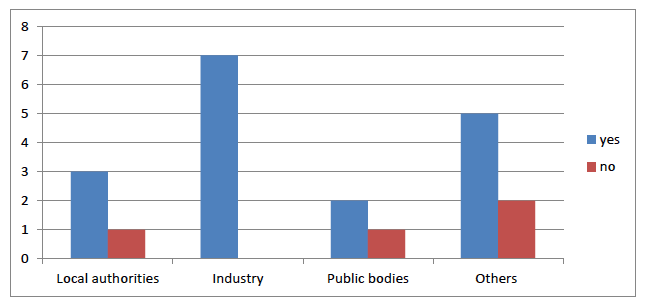
101. The majority of respondents (59%), agreed with the above approach, with only 14% against. 28% of respondents chose not to answer or answered "don't know".
102. Supporters of the approach think that the interpretation, allows for reasonable flexibility to develop the specific characteristics of a fish farming operation within the planning boundary, without the need for repeat modifications to the planning consent, providing flexibility to operators.
103. One respondent stated that the area should always be the area which, if the anchorage or mooring points used in relation to that fish farm or equipment were to be connected by straight lines, would be enclosed by such imaginary lines regardless of any description. That gives clarity to the PDR and avoids uncertainly leading to delays. PDR shouldn't apply to "the area of the farm has not been previously described", as this wouldn't be a valid planning area to which PDR could be applied.
104. Clear definition of fish farm boundaries in the leasing and consenting process were requested, to consider the effect of fish farms on access to anchorages.
105. One respondent disagreed with the approach, as the fish farm can move its own moorings, making it a moveable planning consent, which is undesirable.
Conclusion
106. We recommend that the definition of boundaries is changed to allow developers full used of their consented area under PDR.
Considerations not taken forward - for information and comment
107. Question 18 - Do you have any comments on the following considerations that you would like noted?
- 9.1 Placement of cages greater than 100m or more than one cage
- 9.2 Cleaner fish
- 9.3 Class 21D - Temporary Equipment.
- 9.4 Timescales
108. Comments received:
Placement of cages greater than 100m or more than one cage:
- Need to review farm scale development and threshold limits that trigger EIA screening for fish farms
- Use single terminology, either pens or cages.
Cleaner Fish:
- Species to be specified and consented for new development applications
- Cleaner fish added to an existing site don't benefit from older planning permissions. The species could be included under PDR with prior notification.
Temporary Equipment:
- 3 months is acceptable and should not be extended.
- Class 21D - Option to deploy a temporary spat line in the planning boundary of an existing shellfish farm should be retained within PDR legislation.
- Dispensation to be given to equipment for non-medicinal sea lice treatments
- Temporary equipment for mussel spat collection could be used for 4-5 months
Timescales:
- Guidance needed or a PDR created for sites to be able to completely fallow and remove all equipment without the risk of losing planning permission.
- Consideration required on legal concepts of when a planning permission will be 'spent' or 'abandoned'. If equipment replacement of the same size, colour and design allowed under PDR without prior notification, and replacement will take more than 3 months, prior notification should be required.
- Request further guidance in the circular, and Local planning authorities to be consulted prior to issuing guidance
- Amended legislation should clarify that PDR rights can only be used once.
- Contentious interpretation fuels the debate on the definition of fish farming development, and the application of s26 (6) of the Town and Country Planning (Scotland) Act 1997. Scottish Ministers could use section 26(6A) of 1997 Act to make an order defining "equipment" and "fish farming". .
Response to Comments Made Under Question 18
109. The above comments provided by stakeholders have been noted. There was support to increase the timescale permitted for temporary equipment from the shellfish sector. It has been considered that increasing the temporary equipment limit, under class 21D, from 3 months to 4-5 months to accommodate spat lines, and the possibility that temporary spat lines will be deployed at the same site consistently over a period of time are not in the spirit of the temporary equipment class. There is also the risk that that moorings will remain in place for such lines and difficulty in overseeing this process. It is also expected that the change in PDR to accommodate additional long lines of equal length could be utilised for spat lines and allow for greater flexibility. We will consider further whether any amendments to class 21D should be introduced.
110. It is recognised that the stakeholders have concerns regarding the current definition of development and the operational issues which it can cause. The proposed amendments to permitted development rights go someway to address these issues. It is also recognised that removal of some equipment and fallowing of sites is a required practice for industry. Existing conditions for fish farm PDR require that the development is to be carried out within 3 years of obtaining all relevant approvals required under the class (i.e. following prior notification). In cases where prior notification is not required, it is for the local authority to determine whether the time period equipment is removed for is reasonable for operational purposes. Where operators intend to remove equipment for a longer period of time it is good practice to consult the local authority planning department in advance of any removal operations taking place or as soon as possible afterwards. Removal of all equipment from a fish farm (including sub surface equipment) will result in an existing development being "spent" and planning permission will be required to place either the same, different or additional equipment in future. The demand for guidance to be developed regarding the above, in conjunction with local authorities, is noted and it is our intention to address these issues in the associated amending Order guidance.
111. It is also noted that frustration with aspects of the planning system remains. Scottish Government is considering the current application of the planning system and assessing the case for an alternative consenting regime.
Contact
There is a problem
Thanks for your feedback